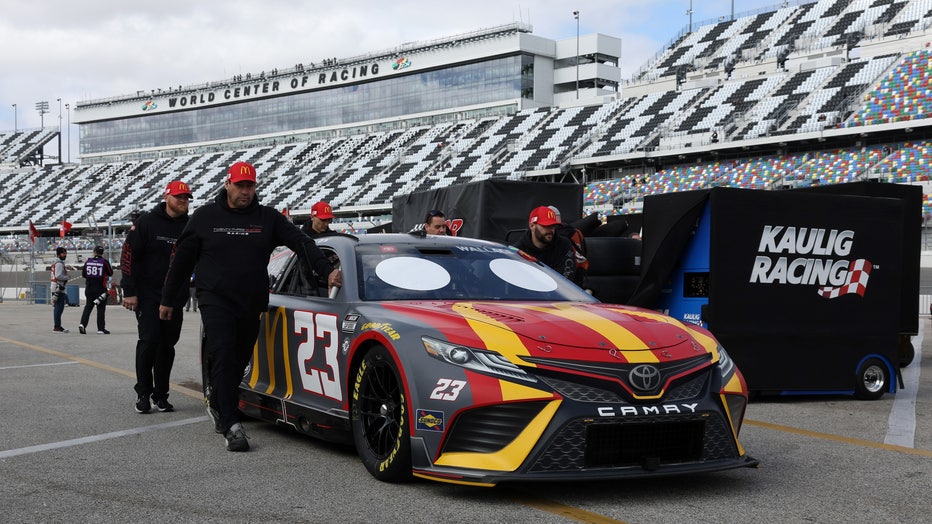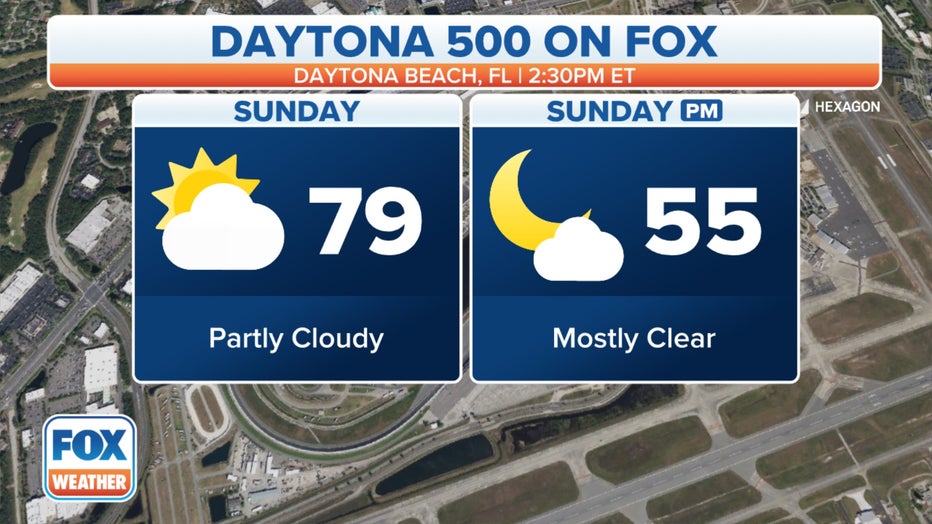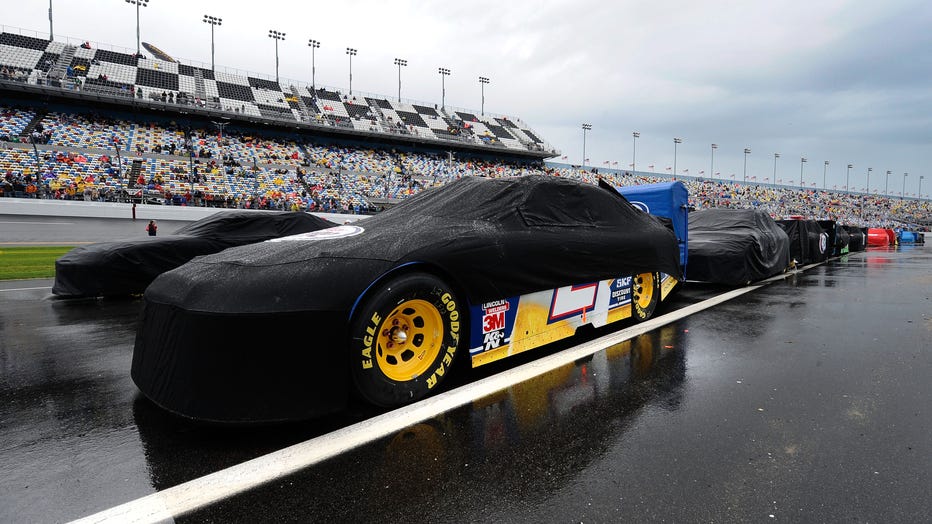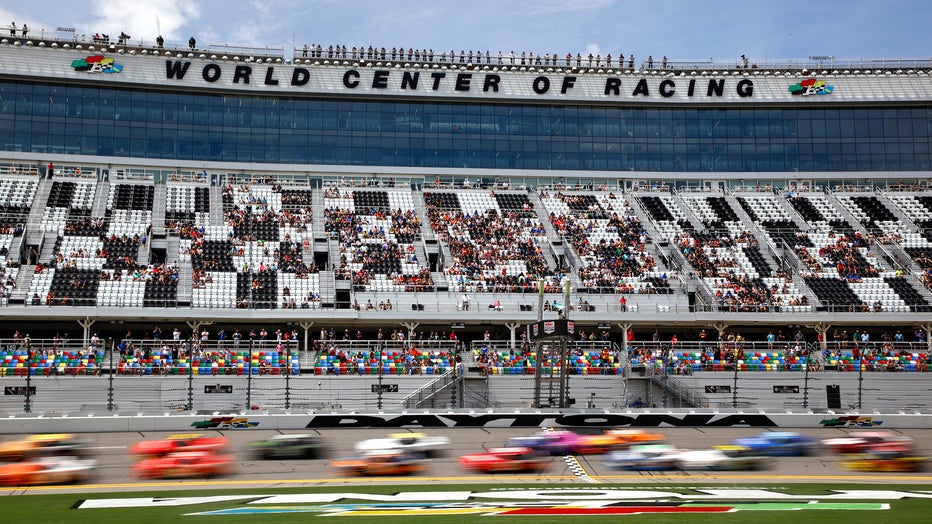From in-car temperatures as high as the 130s to rain, how weather impacts NASCAR races
The 2023 NASCAR Cup Series schedule officially begins Sunday with the 65th running of the Daytona 500 at Daytona International Speedway.
And now that football season is over, a lot of people's Sundays will include watching NASCAR and cheering on their favorite driver. You might think that rain is the only factor that can have an impact on the races, but in general, the weather can play a huge role in the outcome of a race.
"Presuming that cold track temperatures are associated with cold air temps, engines have more horsepower and lower fuel usage on cold days," said Aaron Studwell, Ph.D., Chief Meteorologist, Founder and Lead Researcher for RaceWeather and President of ExoConsulting. "This is because the air is denser with more oxygen and improves the engine’s efficiency."
However, Studwell stated that tire grip is lower during cold weather, which negatively impacts the car's handling. Now, if the track is hot, which is the more likely scenario this weekend, the car's tires have an increased grip and improved handling.

Bubba Wallace, driver of the #23 McDonald's Toyota, drives through the garage during practice for the NASCAR Cup Series 65th Annual Daytona 500 at Daytona International Speedway on February 18, 2023 in Daytona Beach, Florida. (Photo by James Gilbert/
"When the track is hot, there is increased grip and improved handling. But tire wear does increase, so again, it’s about trade-off," said Studwell.
So Studwell says warm (but not hot) tires and cold air temperatures are really the best scenarios for a car’s optimal performance.
What will the weather be like for the Daytona 500?
Currently, it's forecast to be in the upper 70s and partly sunny when the race begins at 2:30 p.m. Eastern time on FOX. By Sunday evening, temperatures will drop to the mid-50s under mostly cloudy skies.

The Daytona 500 will be held Sunday at Daytona International Speedway in Daytona Beach, Florida. (FOX Weather)
‘In-car temperatures can climb into the 130s’
During the summer months, the temperatures at the start of a race may be in the 90s with the heat index approaching 110 degrees.
Studwell said generally, these are forecast, so the drivers, along with the whole race team, will put an extra focus on hydration.
"In-car temperatures can climb into the 130s with some drivers losing between 10-15 pounds during the course of the race," Studwell stated.
Studwell mentioned that continuous innovations in driver cooling systems now bring outside air into the driver’s helmet through a flexible tube. Over the past few years, some drivers have adopted a cooling system that is built into a shirt worn under their fire suit.
From a rain perspective, teams will monitor both the actual and forecast weather, so a crew chief may alter pit strategy and timing based on the short-term forecast.
KEEPING NASCAR DRIVERS FROM OVERHEATING IS A BALANCE OF WEIGHT, AERODYNAMICS AND SAFETY

DAYTONA BEACH, FLORIDA - FEBRUARY 18: Joey Logano, driver of the #22 Shell Pennzoil Ford, drives through the garage during practice for the NASCAR Cup Series 65th Annual Daytona 500 at Daytona International Speedway on February 18, 2023 in Daytona Be
NASCAR can’t run on wet road surfaces
Speaking of rain, while it won't be a factor for the Daytona 500, it is not very desirable for a racing weekend. NASCAR can’t run on wet road surfaces. Without any tread on the tires, the track becomes dangerously slick for drivers.
NASCAR USES SPECIALTY TRACK-DRYING TECHNOLOGY TO RID THE RAIN FROM RACETRACKS

The #2 Miller Lite Dodge driven by Brad Keselowski sits on pit road as rain falls prior to the start of the NASCAR Sprint Cup Series Daytona 500 at Daytona International Speedway on February 26, 2012 in Daytona Beach, Florida. (Photo by Jared C. Tilt
For the passionate NASCAR fans, the weather-related issues range from the heat index to needing sunscreen to taking cover from lightning in the event of nearby storms. As Studwell noted, all these could happen in one afternoon for fans.
"When we issue our forecasts and race day update, there is a reminder for hydration. It’s so easy to lose track of that when tailgating," said Studwell. "Also, even pre-race, we will watch our systems for lightning and issue updates around that too."

A general view of racing during the NASCAR Xfinity Series Wawa 250 at Daytona International Speedway on August 28, 2021 in Daytona Beach, Florida. (Photo by Jared C. Tilton/Getty Images)
Either way, the weather plays a key component once you hear "Drivers! Start .. your … engines!!"

